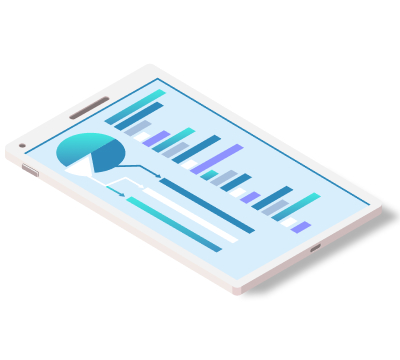Despite Contract For Difference (CFD) being a relatively new financial product compared to other tradable assets, it has become a conversational topic and very popular with investors in the financial markets. So naturally, this might entice you to invest in CFDs, and nobody has a right to deny you this tremendous and exciting investment opportunity. Not even your lack of knowledge. So as a novice, where do you start?
Well, do not worry because TradingGuide experts got you covered. We will guide you on CFD trading and the terminologies involved. By the time you finish reading, you will be in the best position to begin CFD trading.
We will also discuss CFD trading tips or strategies that are simple to follow. You will know how to mitigate the risks involved when trading CFDs.
What is CFD, and What is CFD Trading?
When dealing with CFDs, it’s vital to comprehend that employing leverage can amplify your potential losses significantly. As a trader, a profound understanding of the associated risks is paramount. Note that between 70-80% of retail investors lose money with leveraged products — a clear indication that CFD trading may not be suitable for every investor.
To mitigate the risks associated with CFD leveraged products, always assess your risk tolerance and level of trading experience before venturing into this market. Moreover, be mindful of the UK’s regulatory framework, which imposes a 1:30 leverage cap on CFDs. This limitation aims to mitigate risk but can still result in substantial losses in the event of an unexpected downturn.
You might be lucky to know what CFD trading is, but let us bring the new traders on the same page before they give the trade a shot. CFD stands for Contracts for Differences — It is a contract agreement in a derivative product that involves a buyer who is the trader and the seller who is the broker.
Under the contract, you do not own the asset. Instead, you only speculate and track the underlying asset’s price movement. The difference in value between the opening and closing price of the investment will be your profit or loss.
While many traders may think that CFD trading can earn you huge profits, understand that you are also at risk of losing your money with the activity. For this reason, we advise you to first understand how CFD trading works and the risks involved before undertaking the activity. Plus, start your investment with amounts you are comfortable losing.
How Does CFD Trading Work?

It is essential to know how CFDs work to decide whether to take up the trade or not. Trading on CFDs means that you, as the trader (buyer), agree to enter into a contract with the seller, who is the broker.
The contract is about making price speculations as to whether the underlying asset or security price will rise or fall. You calculate profit or loss by looking at the price difference of an underlying asset when you enter the contract and the time you exit it.
If you make a profit, the broker (seller) who is a party to the contract will pay you the difference in price at the beginning and end of the contract. On the other hand, if you make a loss, then you, as the trader, will pay the broker the difference.
Note that CFD trading is based on leveraged products, meaning that you will have an opportunity to invest with more than your initial capital. As a result, you get to maximise your profits, especially if you apply solid strategies. Unfortunately, using leverage in CFD trading can also magnify losses. Therefore, ensure you conduct thorough market research and analysis on the product you plan to trade for higher success chances. To trade safely, have a plan for your activities and only invest with amounts you are comfortable losing.
Additionally, when engaging in CFD trading, you can enhance your trading experience and convenience by using CFD trading apps.
CFD Trading Strategies For Beginners
As mentioned earlier, CFD trading is a risky investment, and many traders are losing their money to the activity. To maximise your potential of profiting from CFD trading in the UK market, you need to understand the basic strategies involved. This will help you identify when to make the right moves that can earn you profits.
Note: The best CFD trading strategy can help you kickstart your CFD trading activities on a good note. However, while you have an increased chance of earning profits with a strategy you are familiar with, understand that you are not immune to losses either. CFD trading is not only about being strategic but also about having a solid plan to know when to make a move. Most importantly, avoid emotional trading and be open to learning from the losses you make.
Here are CFD trading strategies for beginners.
News Trading
This strategy involves taking advantage of the temporary mispricing of an asset. The cause of the mispricing is the important news that is yet to be factored into the asset price. Such information brings about volatility in the market. Trade is based on market expectations before or after the release of the news. Examples are:
- Intraday trading: Also known as day trading, involves trading in a short time, mostly within seconds, minutes, or hours. However, all open positions must be closed within a day. The idea here is to take advantage of the fluctuating prices and see if you can profit.
- Scalping: In the most basic terms, scalping is ultra-short-term day trading. It involves quickly entering and exiting the financial market taking advantage of the small price fluctuations within seconds or minutes.
CFDs traded under the above trading styles open positions within the same trading sessions. To hack them with news trading, you need to be keen on the financial and economic calendar. This way, you will be aware of events and other factors that affect the underlying asset you are trading.
To hack it with news trading, you need to be keen on the financial and economic calendar. This way, you will be aware of events and other factors that affect the underlying asset you are trading.
With news trading, you can choose to invest just before the market receives the news. To trade this way, you need to have credible information to understand and anticipate the traders’ reaction to the news yet to be released. The idea is to utilize such information for your investments before the market realizes it.
With correct speculations, rewards are handsome. However, it is precarious to trade this way as you are not sure about the impact of the news on the market. There is also a possibility that bad news can negatively affect the market and vice versa, leading to severe losses. The other way of news trading is by going with the flow. Wait for the news and trade. However, bear in mind that prices change rapidly.
For example, use forex CFD trading strategies to stay abreast with essential statistics by the central bank when trading on currency pairs. Central banks being the primary FX market movers, can use such statistics to make decisions that can trigger gross volatility on the market.

Pair Trading
Use CFDs to evade risk exposure through pair trading. This strategy works by investing two different CFDs in the same industry, taking one long position and a short position for the other.
Correlation, a measure of the relationship between the two assets, is essential for this strategy. The main motive of this strategy is to maximize the divergence in underlying asset prices.
It is not a must for each position to make a profit. Your interest is the profit of one position to exceed the potential loss of the other. Study the market for irregular trends between two stocks. It should indicate that the correlation is weakening, and it’s the best time to strike and take advantage of the divergence. The long position is the weaker company going down, and the short position is the stronger one.
The overall direction of the market does not affect your results. You will be winning on one position while losing on the other one; hence your profit will be the difference between the two asset prices and not the direction of the two assets.
Hedging
You can compare hedging to insurance, where you cushion yourself against the loss of an asset. It is an effective strategy as it aims at eliminating or reducing losses in another investment. A hedge is a position that you open in one financial instrument targeting reducing exposure to unstable prices in another asset.
Example
You have a diversified portfolio with companies A, B, C, and D. Based on your analysis, you speculate that company D’s shares will be weakening. You proceed and open a short CFD position on company D to cushion against the decrease in its stock price. Thus, even though you still have it in your investment portfolio, you have reduced your loss exposure even though the investment portfolio is long-term.
Like any other asset, you can also trade on gold or add it to your portfolio.
Take advantage of price volatility by using CFDs to protect traditional investments. Price volatility affects the market in a short time hence affecting the liquidity and the general market conditions. When this happens, you might think of selling your shares to buy them when the market stabilizes.
However, it will be costly considering the brokers and the costs involved. On the other hand, CFDs are cheaper and more flexible when market conditions and participants become less predictable. So, you simply have to create a balance between the costs and the benefits.
Use of Risk Management Tools
As a novice trader in the UK, you should manage trading risks to mitigate losses should a CFD trade go against you. Cushion yourself by carefully planning and making use of trading risks management tools such as stop-loss orders. A stop-loss order is a risk management control that lets your broker know how much you are willing to risk within the trade, and stops the trade when you hit the amount. It comes in handy if your CFDs drop while you are not watching.
Another tool to manage trading risks is the take-profit order. It is the opposite of a stop-loss order. The order indicates how much you are willing to make in profits with one trade. The trade will be closed the moment you attain the amount. Due to the market’s volatility, it is better to lock your profits before the prices of the assets begin to fall.
Money Management
We advise beginner traders to save money by using trading strategies that will not require you to pay any fees to keep your trading positions overnight. The three trading styles, including intraday/day trading, swing and scalp trading, will help counter this.
You need the best CFD trading platform to have a chance at succeeding in this activity. CFD brokers charge varying fees and commissions, be it the minimum deposit, transaction cost, commissions, spreads, market data fees, or overnight charges.
So settle on a credible broker that suits your trading needs. It should also charge reasonable fees and commissions that will not inconvenience your budget and leave you with a fair amount for the trade. In addition, the CFD broker should give you the freedom to choose from a range of assets to invest.
Use Leverage Wisely

Leverage is when you gain exposure to the financial market with a smaller upfront capital. One significant advantage of CFD trading is the ability to access high levels of leverage. Unfortunately, it comes with proportional risks.
If the market moves in the opposite direction, it magnifies the loss. Therefore, it is vital to use CFD leverage wisely, or it can lead to very devastating results. The more you increase the Leverage in your CFD trade, the more you take up risks.
As a novice, it is advisable to keep Leverage at the minimum when trading on any leveraged product (CFD included). If possible, trade with no leverage to protect your downside risks. This way, you will test the waters experiencing CFDs at their most basic level. Then, as you gain experience, you can start using and increasing the amount of Leverage.
Conclusion
You might have heard of this inaccurate and misleading notion that investing in CFDs is more challenging than other assets. Don’t be discouraged because all tradable instruments come with risks. Your CFD trading success is in your hands and is directly linked to the CFD trading strategies applied. Settling on the right strategy is one of the most critical steps in your CFDs trading journey. So, choose a working formula.
Additionally, stick to your trading plans and fine-tune them as you gain experience on the trade. Your main aim of trading is profits, but remember you are not immune to losses, which are bound to occur with lousy trading strategies. All in all, we hope this guide provides the information you need to venture into CFD and hopefully succeed. So, good luck!




The most important points to take into consideration are
Speed
Reliability
Low cost
Keeping in mind the 3 important points, use this as your checklist when choosing a CFD broker.
Let’s be honest — CFDs are not some ‘exciting opportunity’ for beginners. Leverage cuts both ways, and most new traders underestimate that until it’s too late. Strategies are great, but discipline and risk control matter far more. If you can’t manage emotions or size your positions properly, no guide will save you